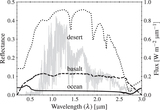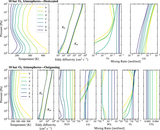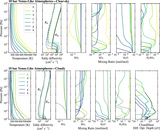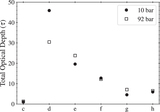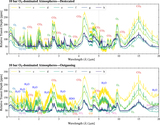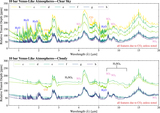Image Details

Caption: Figure 2.
Input stellar spectral energy distribution (shown in orange) for TRAPPIST-1, an M8V star (Liebert & Gizis 2006), using the PHOENIX v2.0 spectral database (France et al. 2013), normalized to ﹩1{S}_{\oplus }﹩. The UV is from Proxima Centauri (Meadows et al. 2018a), scaled to the measured Lyα flux (Bourrier et al. 2017). The solar spectrum is shown in black for comparison. Photometric bands (VRIJK) are shown as points with error bars (black are from Gillon et al. 2016; blue are band-integrated PHOENIX model fluxes), where the horizontal bars are the FWHM of the filter bands, and the observed flux errors are 3σ. Late-type M dwarf stars like TRAPPIST-1 have different effects on planetary photochemistry and climate than G-type stars, due to the different UV flux distribution and energy peak in the NIR. These spectra are available online using the VPL Spectral Explorer (see footnote 12) or upon request.
Copyright and Terms & Conditions
© 2018. The American Astronomical Society.


